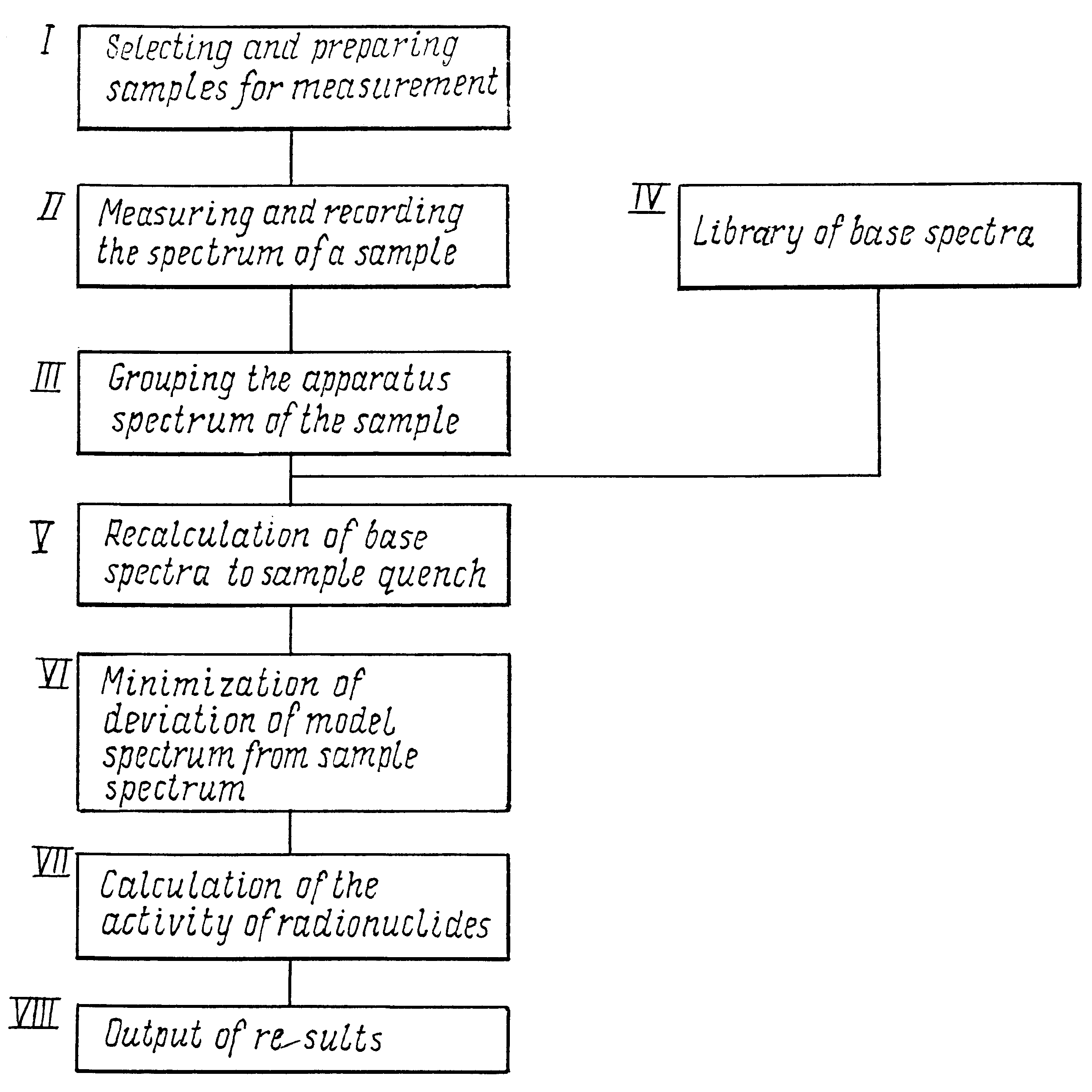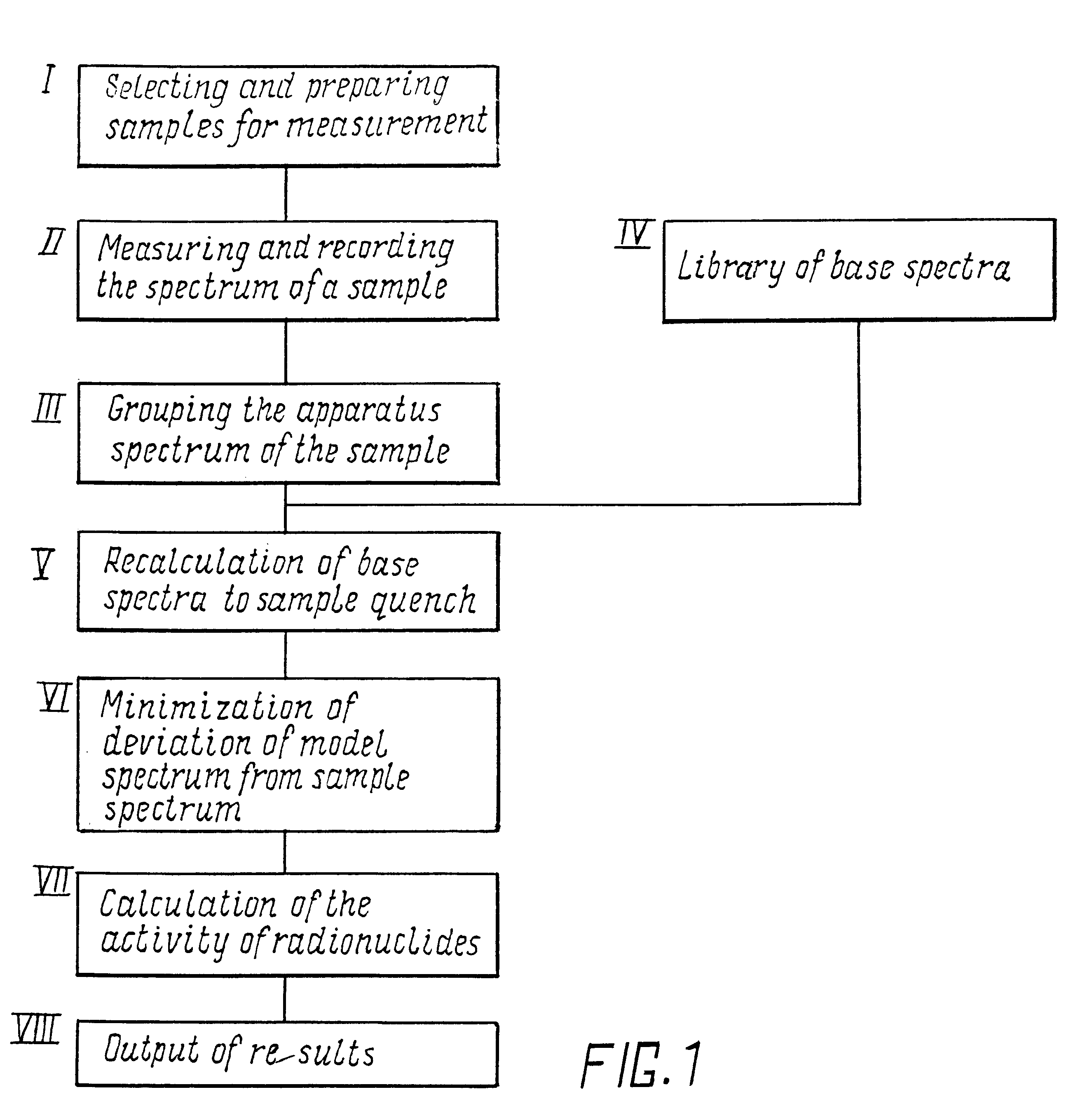Method for identifying radionuclides in probes using a liquid scintillation sensor
a radionuclide and scintillation sensor technology, applied in the direction of material analysis by optical means, measurement devices, instruments, etc., can solve the problems of not being able to distinguish the contributions of different alpha-emitters, known methods that do not make it possible and existing methods that are not able to identify radionuclides with low activity
- Summary
- Abstract
- Description
- Claims
- Application Information
AI Technical Summary
Benefits of technology
Problems solved by technology
Method used
Image
Examples
example 1
An aqueous technological sample is taken from one of the burial sites of radioactive wastes in Russia. This sample has an activity of about 10.sup.6 Bk / l, due to the presence of a large amount of tritium, but it is necessary to determine other, weakly-active, radionuclides in the sample, which in respect to their radiation danger exceed tritium by several orders of magnitude.
This sample is prepared in the following manner. The pH of an aqueous sample is brought to the neutral value, the obtained solutions are put into flasks for liquid scintillation count, preliminarily filled with 10 ml of a scintillation cocktail. The obtained homogeneous solution is held in darkness for 12 hours to quench possible chemical luminescence and photoluminescence processes. Then the flasks are set in a liquid scintillation analyzer for measurement. The spectrum of the sample is measured and the measurement parameters recorded: time of measurement--60 mm, quench--270, specimen of sample--5 ml.
The follow...
example 2
A test sample of soil is prepared, which weighs 1 kg and contains a mixture of alpha-active isotopes--15 Bk U-232, 5 Bk Pu-236, 10 Bk Pu-239, 3 Bk Am-241, and interfering beta-active radionuclides--2 Bk H-3, 10 Bk C-14, 5 Bk Co-60, 35 Bk Cs-137. The sample is dried for 6-8 hours at a temperature of 60.degree. C. in a drying cabinet, is ground in a porcelain mortar and is spread on a vibration table with a set of sieves of different diameter. The finest fraction (0.5 mm and less) is divided by the quartering method and a 10 g portion is taken for analysis.
It is annealed for 6 hours at a temperature of 450.degree. C. After annealing, 3 g of the sample are taken and acidic breaking up is carried out using concentrated nitric acid and concentrated hydrogen peroxide. In order to do this the sample is heated on an electric plate for 1 hour with 40 ml of concentrated nitric acid and 2 ml of 30% hydrogen peroxide with periodic mixing in a heat resistant beaker covered with an hour glass. Th...
PUM
 Login to View More
Login to View More Abstract
Description
Claims
Application Information
 Login to View More
Login to View More - R&D
- Intellectual Property
- Life Sciences
- Materials
- Tech Scout
- Unparalleled Data Quality
- Higher Quality Content
- 60% Fewer Hallucinations
Browse by: Latest US Patents, China's latest patents, Technical Efficacy Thesaurus, Application Domain, Technology Topic, Popular Technical Reports.
© 2025 PatSnap. All rights reserved.Legal|Privacy policy|Modern Slavery Act Transparency Statement|Sitemap|About US| Contact US: help@patsnap.com



